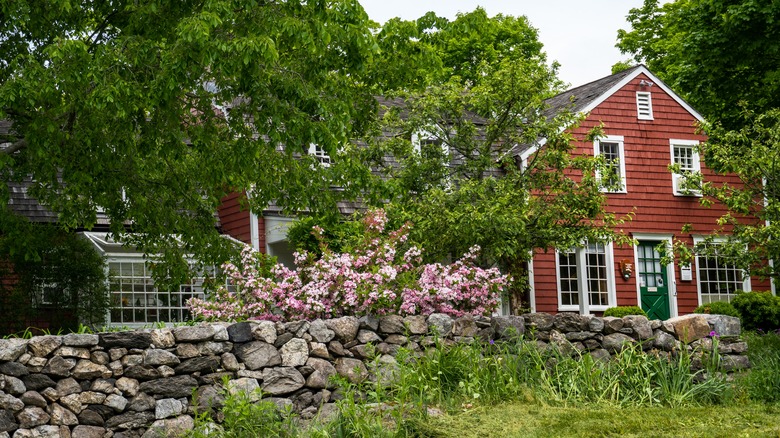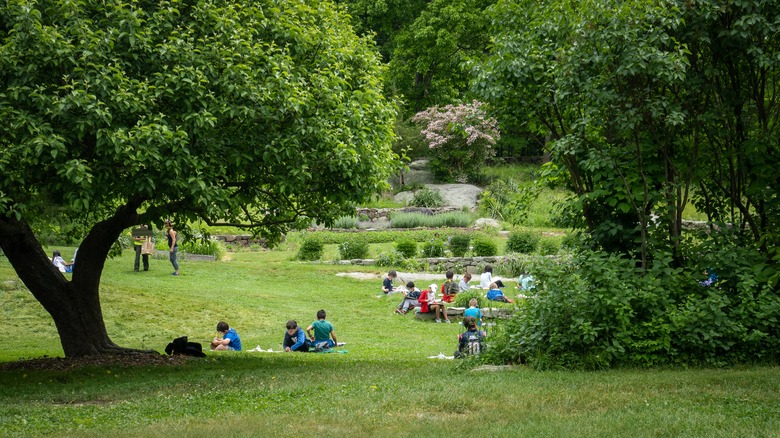Connecticut's Artsy Historical Park Set On Rolling Hills Is A Picturesque Woodsy Escape With Creative Legacy
Weir Farm National Historical Park feels like stepping into a painting. Surrounded by lush rolling hills, sunny fields, and vibrant flower-filled gardens, it's easy to see how this stop on Connecticut's world-class art trail has sparked creativity for generations. Once the summer retreat of American Impressionist Julian Alden Weir, the park is one of only two National Parks dedicated to the visual arts.
Located in Wilton, Connecticut, 60 miles from New York City, visitors can drive or take the Metro-North Railroad, which drops riders off at Branchville Train Station just a mile and a half from the park every few hours. Nearby, the charming town of Ridgefield adds to the area's creative vibe, pairing winding country roads with intimate theaters and world-class art.
As you walk the aesthetic grounds, you'll understand why Weir described his home as the "Great Good Place." The Weir Pond trail loop is a relatively easy 1.2-mile hike through woods and wetlands, showcasing views that have inspired artists for years. In the late 19th century, Weir invested his earnings to buy the land he loved. After he won $2,500 (which would be more than $99,000 today) for his painting "The Truants" at a Boston Art Club exhibition, the artist constructed the pond on his property, complete with features like a boathouse, stone-lined walls, and even an island with a gazebo.
While you are free to wander the grounds on your own, the park also offers guided tours where rangers immerse you in the history of Weir's life at his farmhouse and studio. When you're done touring the sites, the park invites you to pick up a brush and explore its natural beauty firsthand.
Bringing history to life through art
As Weir became more famous for his landscape paintings, he joined forces with friends Childe Hassam, John Henry Twachtman, and seven other artists to create a group known as "The Ten American Painters," or simply "The Ten." There, they used nature as their backdrop, blending light and color to create classics that came to define American Impressionism. As his daughter, Dorothy Weir Young, once said about her father, "Weir found the world beautiful and he spent his life showing others the visions he had seen."
At Weir Farm, the legacy of creativity is more than history — it's part of the visitor experience. The park encourages artists of every skill level to "take part in art" by bringing their own or picking up free-to-use art supplies at the visitor center. The park also offers free workshops and classes throughout the year that teach new and veteran artists alike how to paint the picturesque sights of Weir Farm on canvas. If you're looking for other places to draw inspiration, Norwalk, just 12 miles south on the Long Island Sound, is a harbor city full of art, New England charm, and oysters.
The park is open year-round from sunrise to sunset, and admission is free. So, whether you're here to explore the life of one of America's first Impressionists or to try your hand at capturing the park's scenic landscapes yourself, Weir Farm National Historical Park remains a welcoming haven for artists of all backgrounds.

